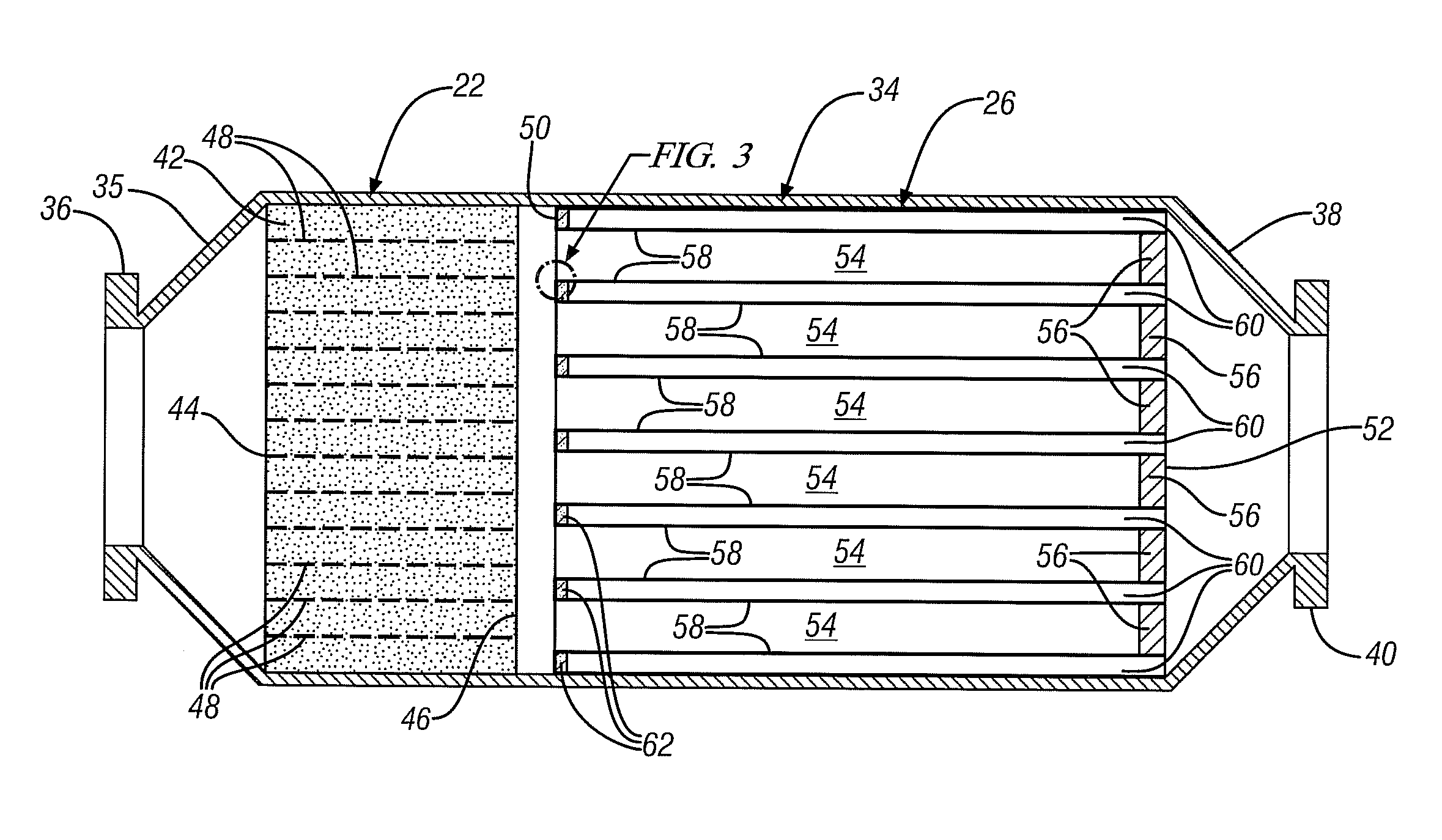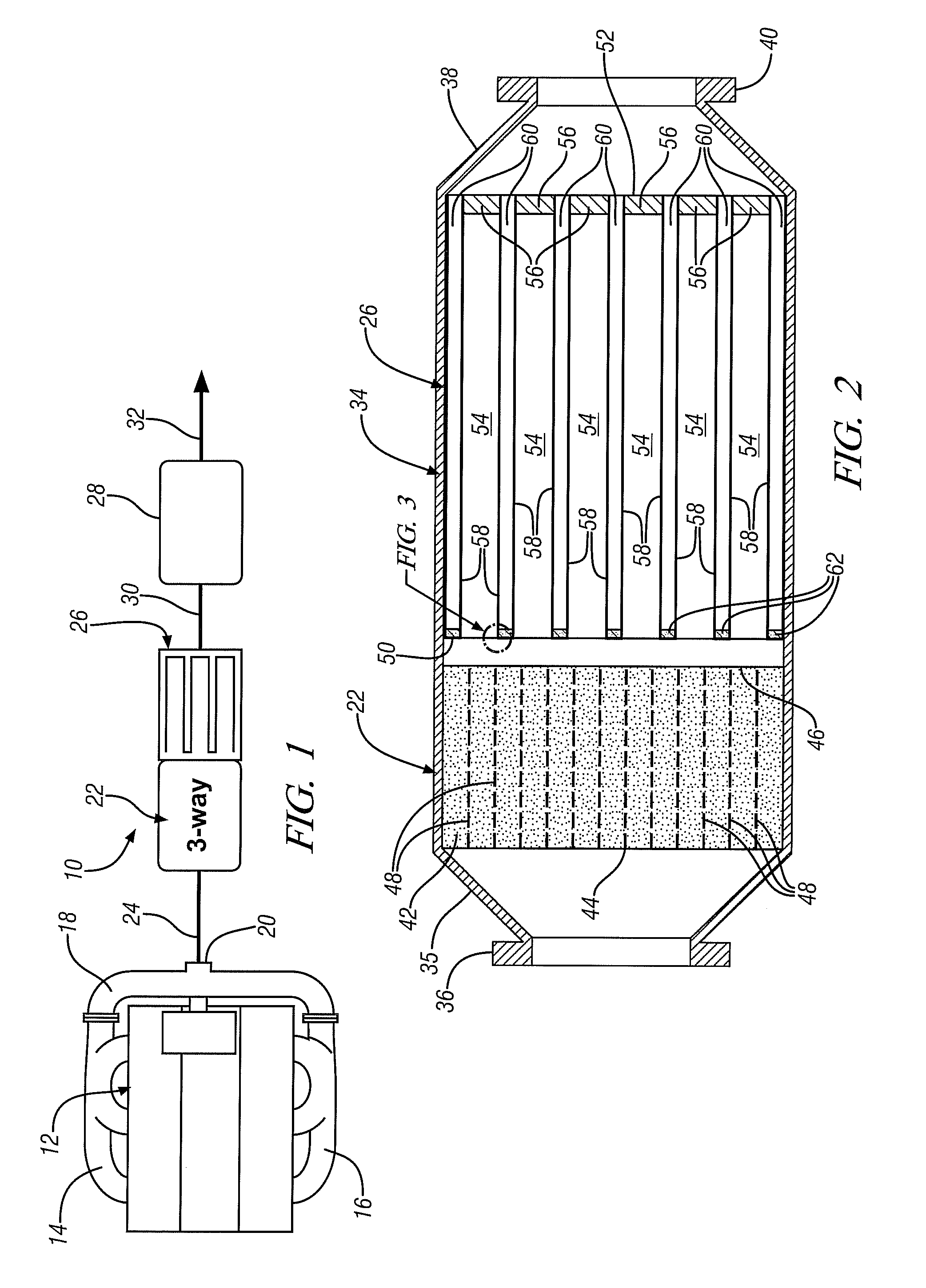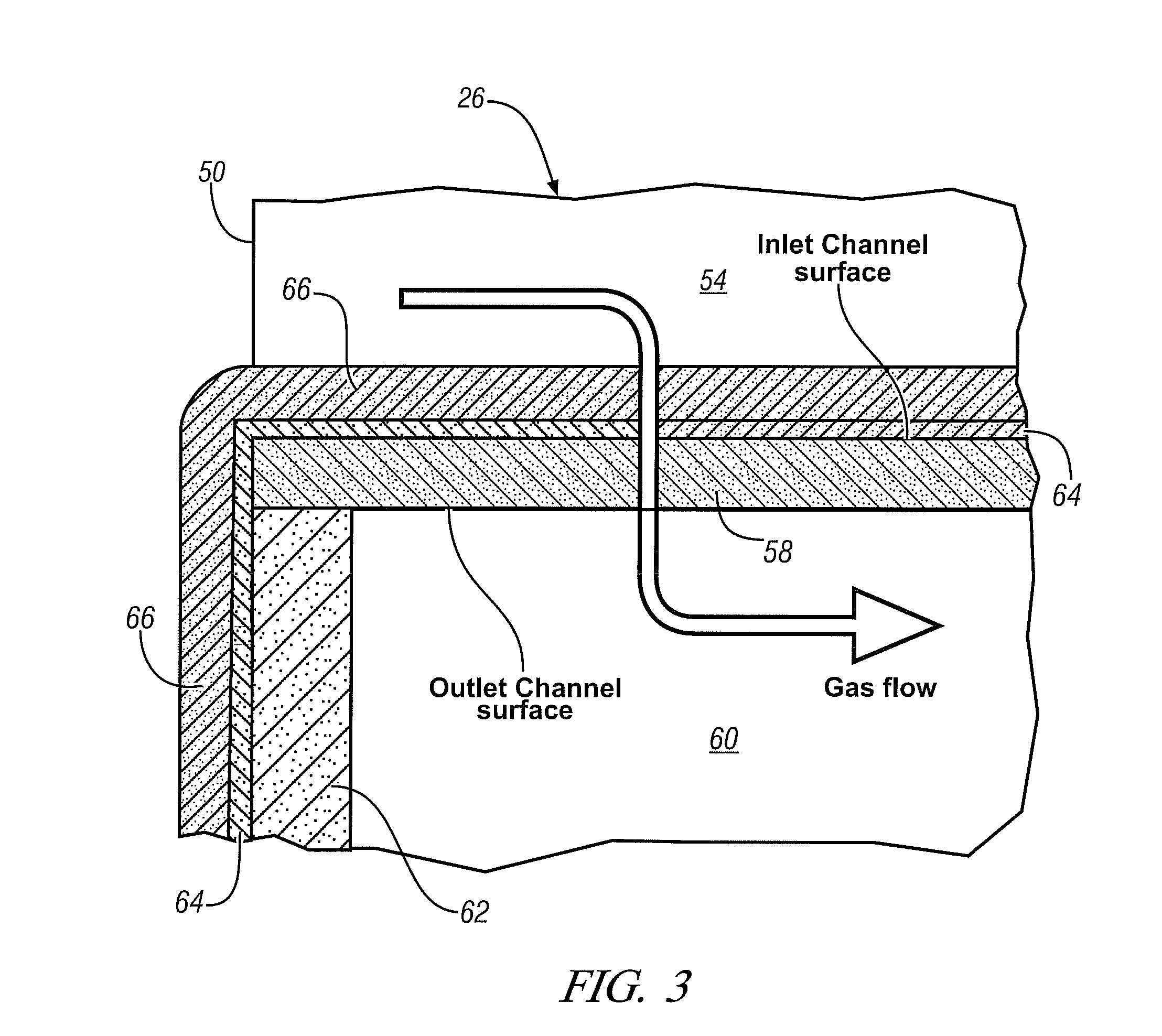Exhaust particulate management for gasoline-fueled engines
a technology for exhaust particulate management and gasoline-fueled engines, which is applied in the direction of machines/engines, separation processes, mechanical equipment, etc., to achieve the effect of less catalys
- Summary
- Abstract
- Description
- Claims
- Application Information
AI Technical Summary
Benefits of technology
Problems solved by technology
Method used
Image
Examples
Embodiment Construction
[0018]Vehicle drivers have long observed a cloud of black, agglomerated particulates that may emanate from unfiltered / untreated exhaust of a diesel engine powered vehicle, particularly when the vehicle is accelerating under heavy engine loading. Such a cloud of particulates is not observed in the exhaust of gasoline-fueled engines. Still gasoline engines produce some very small, generally spherical, carbonaceous particles (e.g., about 20 to about 200 nanometers in size. It is recognized that the total mass of such particles from a mid-size vehicle engine may exceed about five milligrams per kilometer of driving and about 1012 particles per kilometer. A purpose of this invention is to reduce the amount of such very small particles from the gasoline engine exhaust without adversely affecting the fuel efficiency of the engine and the present successful reduction of undesirable gaseous constituents in the exhaust.
[0019]FIG. 1 is a schematic illustration of one embodiment of an exhaust s...
PUM
| Property | Measurement | Unit |
|---|---|---|
| thickness | aaaaa | aaaaa |
| thickness | aaaaa | aaaaa |
| porosity | aaaaa | aaaaa |
Abstract
Description
Claims
Application Information
 Login to View More
Login to View More - R&D
- Intellectual Property
- Life Sciences
- Materials
- Tech Scout
- Unparalleled Data Quality
- Higher Quality Content
- 60% Fewer Hallucinations
Browse by: Latest US Patents, China's latest patents, Technical Efficacy Thesaurus, Application Domain, Technology Topic, Popular Technical Reports.
© 2025 PatSnap. All rights reserved.Legal|Privacy policy|Modern Slavery Act Transparency Statement|Sitemap|About US| Contact US: help@patsnap.com



